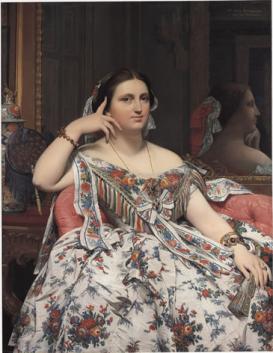The skin is the most extensive organ of the human body and forms at the same time its exterior. When representing a human body, the artist is thus inevitably confronted with the task of depicting skin. Having been considered an exceptional object of representation already in antique art treatises, skin gained a particular significance in art theory since the Renaissance, as the convincing depiction of skin was associated with the creation of “life” on canvas. In the second half of the eighteenth century, and with the emergence of the disciplines of physiology and dermatology, skin achieved a new importance as a scientific object.
Mechthild Fend's research project dealt with skin as a representational problem in the visual arts and as a scientific object focusing on late eighteenth and nineteenth-century France. She investigated different conceptions of the borderlines of the body and asked how, in different renderings of skin, the relation of inside and outside is negotiated. Materials are medical texts, writings on artistic anatomy and a set of artistic works: the portraits by Jean-Honoré Fragonard, Jacques-Louis David, Jean-Auguste-Dominique Ingres, and drawings and pastels by Jean-Francois Millet.
Mechthild Fend's working assumption—and the reason for focusing on this particular period—is that there occurred a profound shift in perceptions of the human body and its boundaries, a process of long duration unfolding between the Renaissance and the emergence of the culture of bourgeois modernity. While medical tracts based on the humoral theory described skin as a membrane for the exchange of fluids, late eighteenth- and early nineteenth-century physiologies of the skin referred to skin as an interface reciprocally transmitting information from inside to outside. Skin thus achieves the function of a mediator. It shares this mediating function with the image, a conjunction made explicit in metaphorical descriptions of skin as canvas and canvas as skin.
Medical texts dating from the second half of the eighteenth century characterize skin as “nervous canvas,” a notion of skin that can be associated with Fragonard’s Portraits de fantaisies. In these portraits, the artist used a loose and vivid brushstroke, thus presenting skin as a vital, sensitive organ. Opposed to that, neoclassical painting put more emphasis on the outline contour, the visual sign for the borderlines of the body. In some of David’s portraits for example, skin is presented at the same time as a closed border and as a subtle mediator between inside and outside. This perception of skin is related to Xavier Bichat’s definition of skin as “limite sensitive” (1801).
In elaborating on these correspondences between art and medical discourse, Mechthild Fend did not wish to claim that artist representations of the human body are merely illustrations of medical knowledge. The paintings are interpreted as independent statements in the debate about the functions of skin and articulate a specific knowledge on the human body’s envelope. Treatises on artistic anatomy are important mediating instances between artistic and medical discourse. Nineteenth-century artistic anatomy signals a particular interest in the surface of the body and wishes to convey knowledge of the physical interior via a trained observation of the exterior.
In the case of Ingres, the relation of art and anatomy is particularly complex. Especially in his female portraits he repudiates both the reference to the physical and psychic interior. Ingres had an explicit antipathy towards anatomy, a position that has to be understood in the context of changing paradigms of art and science within the emerging episteme of modernity. In depicting skin as a hermetic borderline, Ingres fosters a reflection on the self referential nature of the painting itself and makes of the skin another metaphor for the surface of the painting.

